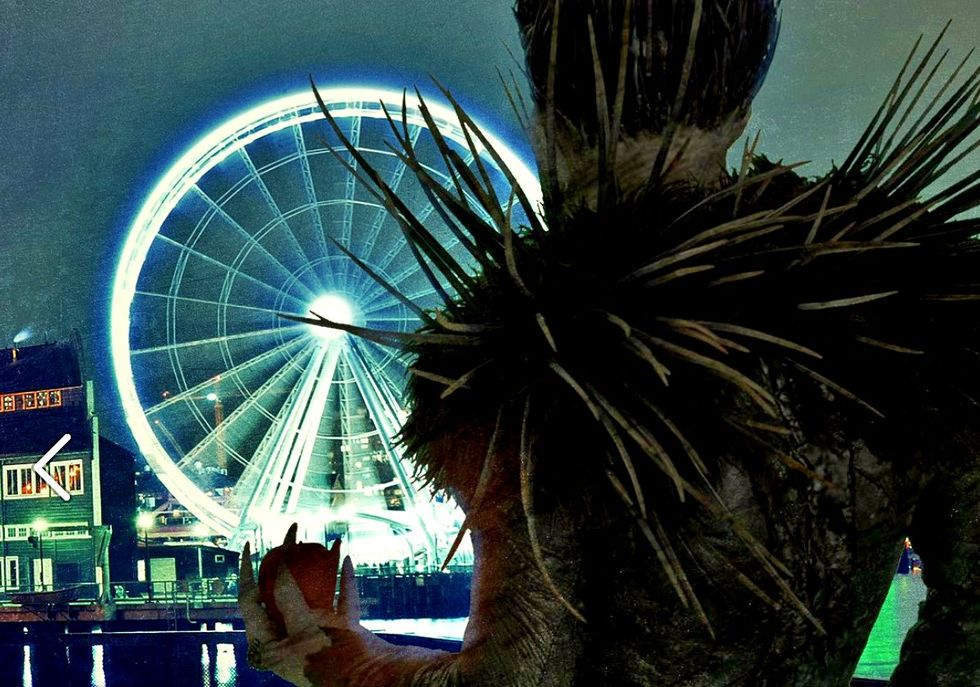When I was in high school, I didn’t know a great deal about anime. When I was younger, I was obsessed with Dragon Ball Z, which is, almost undeniably, the most famous and persistently popular anime series considering its wide reach and foundation in Western pop culture. I didn’t understand anime or how it differed from American animation besides the easily observable style.
Dragon Ball Z was targeted towards children and preteens when it aired on television and was, therefore, censored, but, I watched the DVD seasons as they were released, which were uncensored.
They pushed the envelope every once in a while, but, it still wasn’t notably off-color or mature. I didn’t understand that anime was not tied with an age group in Japan, which is one aspect of why so many Westerners have developed this fandom. In America and most of Western culture, animation, which can often be done beautifully, elegantly, and masterfully, is predominantly employed to create entertainment for children or families.
In 2016, Sausage Party was a testament to this strange cultural norm considering that the entire film was a spoof of American animation simply by not being a children’s film. In Japan, anime, or, that culture’s style of animation, is simply viewed as another means of storytelling and entertainment, and it is just as common to see an anime series be rated TV-MA as TV-Y7.
This elongated elaboration on my history with anime serves to lead up to what series completely altered the way I perceived anime, and that series is the notorious Death Note.
As a sophomore in high school, one of my friends introduced me to the series by showing me the two Relight films, which were abridged versions of the show, telling the entire story of Death Note in two 120-minute films.
I really liked the show, and around that time, I had become obsessed with Batman and the Joker, so, this might partially be why the cerebral nature of the narrative and the chemistry between anti-heroic protagonist , Light Yagami, and anti-villainess antagonist, L, resounded with me, although, I believe to attempt to categorize Death Note characters and plot points as protagonists, antagonists, climaxes, etc, does injustice to the show, which is ultimately just a story dealing with complex questions about death and morality by showcasing brilliant characters making decisions.
After watching the relight films, I did extensive research on the show and watched the two openings on YouTube, and I remember being astounded by how intense they were.
I remember being shocked by the dark nature of Light’s character, and, how an entire series encompasses mass murder, and there are no recurring themes of good over evil. Perhaps, order as a virtue to endlessly war with chaos, but, the series has no stake in innocence.
Growing up perceiving animation as innocent, Death Note seemed unbearably guilty. That’s probably why I fell in love long after I was initially introduced to the series when I finally had the opportunity to watch the show from beginning to end.
Death Note has seemingly risen in popularity over the past few years, and, it definitely took a steep rise in popularity with the release of the Netflix live-action adaptation. Or, at least, people saw that Netflix was releasing it and immediately thought, “Oh yeah. I remember that.” There’s no such thing as perfection with art, but, of all the anime I’ve ever watched, Death Note comes closest to being a perfect anime for most of the series.
After around 24 or 25 episodes, the show admittedly takes a considerable dip in interest and becomes somewhat stale, but, it pulls it back together for an intense conclusion for the final five or six episodes. Keep in mind that there are only 37 episodes, so, the majority of the series is solid anime.
One of Death Note’s greatest strengths is its subversion of anime tropes. An overly-confident protagonist with great potential but has a ladder to climb in terms of wisdom and experience. A dark, brooding character who is the most capable, yet, remains in the shadows and withholds his or her ability.
A mentor or “big brother” type of character who recognizes the hotheadedness of the protagonist and keeps them in check, and, the importance of friendship, which the protagonist slowly realizes is required to overcome his or her obstacles. Death Note, doesn’t subvert these tropes as much as completely it ignores them.
This is the presentation of a story. Light is undeniably the central character, however, his perspective isn’t the only perspective we’re introduced to.
The narrative follows the random dropping of a Death Note, a notebook possessed by Gods of Death, in the “human world” by apathetic God of Death, Ryuk, which is discovered by genius over-achiever, Light Yagami, who begins using the Death Note to commit mass murder of hardened criminals. His activities almost immediately catch the attention of L, an eccentric, brilliant detective, who realizes the complexity of the case.
This murderer defies what we know about human capability, and is able to use methods of deductive reasoning and logic to assess what is most likely a supernaturally-fueled killer. I will not describe much more of the narrative as I would give away to obvious spoilers.
The primary question of Death Note might come across as derivative. Is the murder of murderers wrong? And, obviously, is Light’s actions justified? Across the span of the series, Light kills a few innocents, but, one must realize that Light is being judged as a human.
The Gods of Death, or Shinigami, are never assessed as being as evil or good as Light, who is dichotomized by the general public as either a messianic savior or an unstoppable mass murderer. You’ll find yourself faced with these questions if you enjoy the ride that is Death Note.





 mr and mrs potato head
StableDiffusion
mr and mrs potato head
StableDiffusion










